Discover 9 hidden attractions, cool sights, and unusual things to do in Słubice (Poland). Don't miss out on these must-see attractions: Stadion SOSiR, Collegium Polonicum, and Church of the Holy Virgin Mary The Queen of Poland. Also, be sure to include Wikipedia monument in your itinerary.
Below, you can find the list of the most amazing places you should visit in Słubice (Lubusz).
Table of Contents
Stadion SOSiR

Multi-purpose stadium. The SOSiR Stadium is a multi-purpose stadium in Słubice, Poland, home of the IV liga football club Polonia Słubice. It is located just east of the Oder river close to the German border.
Building work on the 16-acre (65,000 m2) complex employing Russian prisoners of war commenced in spring of 1914, when present-day Słubice was still part of German Frankfurt (Oder), but due to the effects of World War I wasn't completed until 1927. Despite its name and contrary to common belief, the Olympic Stadium (originally named Ostmarkstadion) was not built for the 1936 Summer Olympics.
With the implementation of the Oder–Neisse line, the area passed to the Republic of Poland in 1945. The stadium underwent a complete refurbishment in 2003. It now counts as one of the oldest stadia in Poland with its historical south-eastern tribune reminiscent of an amphitheatre.[1]
Address: ul. Sportowa 1, 69-100 Slubice
Collegium Polonicum
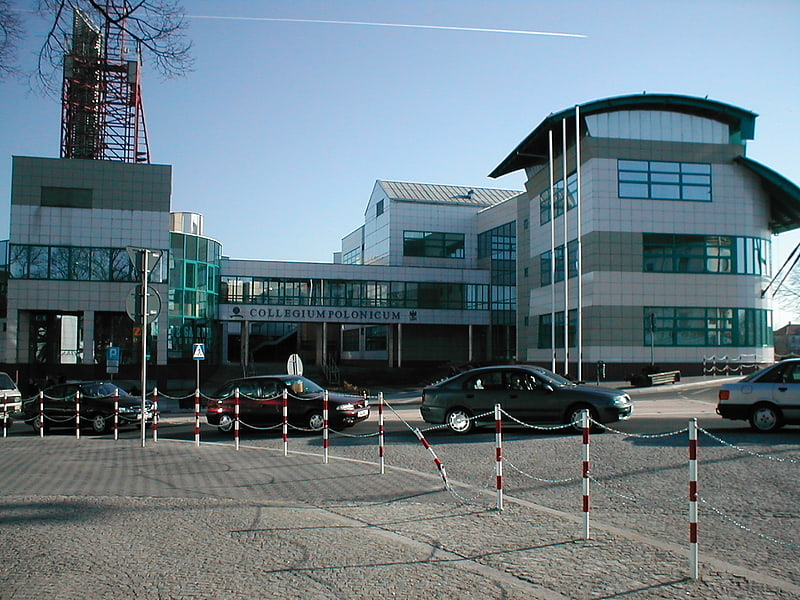
The Collegium Polonicum in Słubice is a joint academic unit of the Adam Mickiewicz University in Poznań and of the Viadrina European University in Frankfurt. Its focus is on interdisciplinary scientific research and teaching on German-Polish, European, intercultural and cross-border issues. Collegium Polonicum is also a branch of the Adam Mickiewicz University in Słubice, in whose building this joint unit is physically based. This building had been erected in the years 1992-2001 by the Adam Mickiewicz University for the purpose of joint research and teaching activities with the Viadrina European University. As branch of Adam Mickiewicz University, Collegium Polonicum is one of four such units located outside Poznań and notably housing the Academic Secondary School for General Education in Słubice.[2]
Address: Kościuszki 1, 69-100 Słubice
Church of the Holy Virgin Mary The Queen of Poland
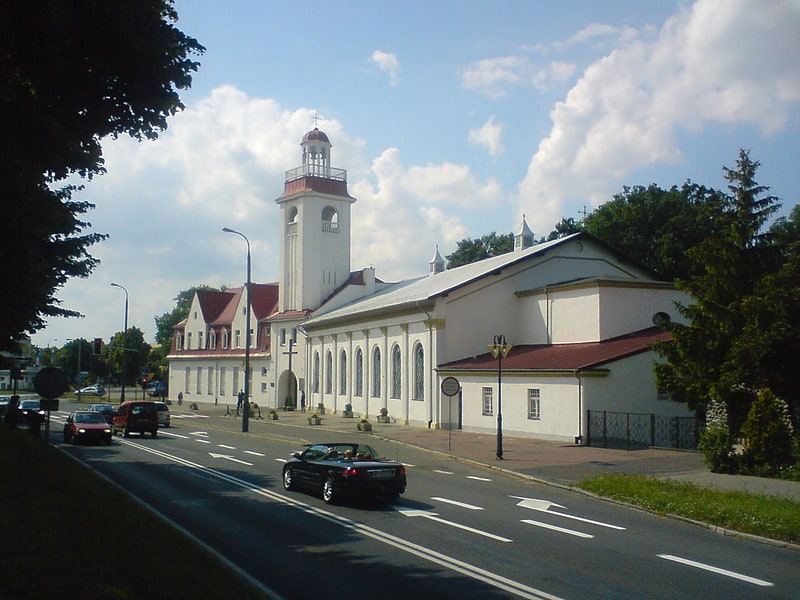
Also known as: Kościół Najświętszej Maryi Panny Królowej Polski w Słubicach
Building. The Church of the Holy Virgin Mary The Queen of Poland is located in Słubice, a small town in Słubice County, in Lubusz Voivodeship, in Poland. It belongs to the Roman Catholic Church. The building which dates back to 1775 and served as a rifle range was adapted to its present use after World War II, when Słubice became a part of the Polish territory.[3]
Wikipedia monument
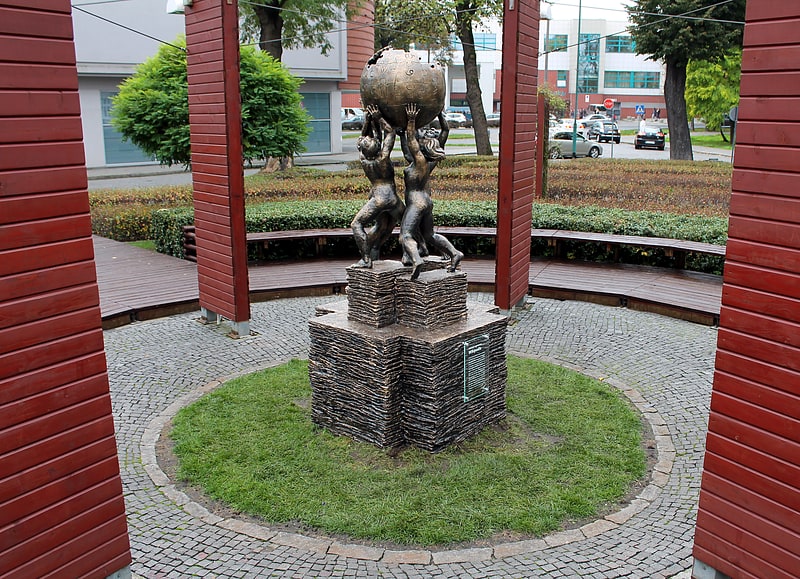
The Wikipedia Monument, located in Słubice, Poland, is a statue designed by Armenian sculptor Mihran Hakobyan honoring Wikipedia contributors. It was unveiled in Frankfurt Square on 22 October 2014 in a ceremony that included representatives from both local Wikimedia chapters and the Wikimedia Foundation.[4]
Plac Przyjaźni
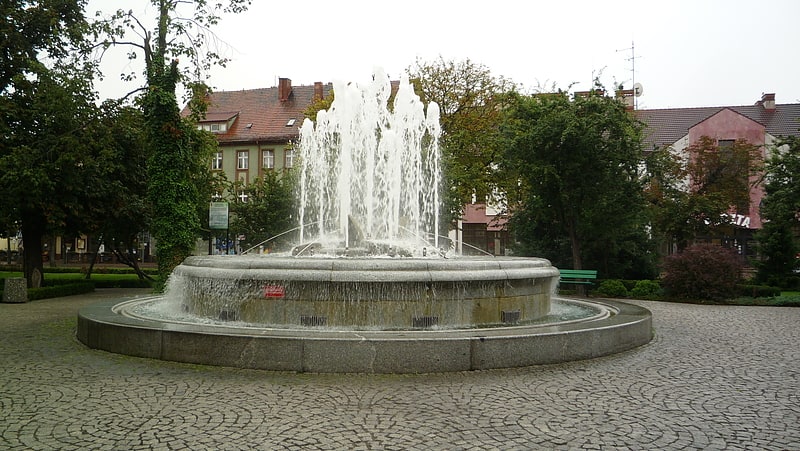
Friendship Square - central square in Słubice.
Skwer Plac Wolności
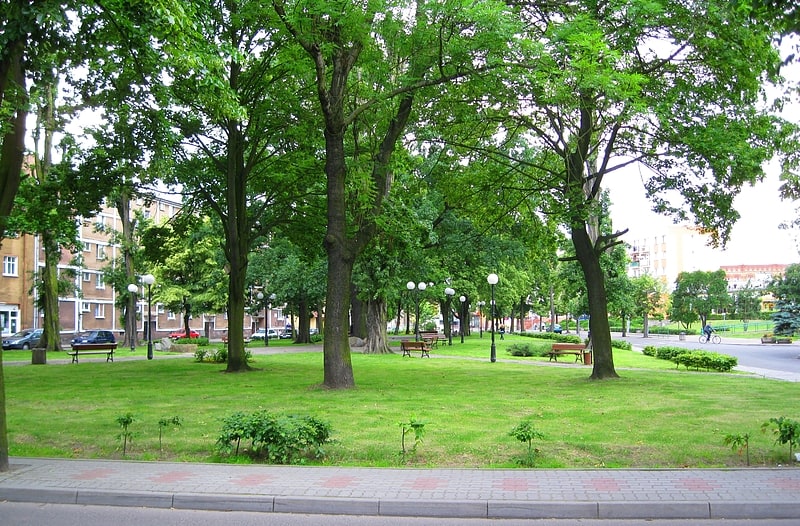
Wolności Square - one of the squares in the center of Słubice. There is a square with an old English oak, which is a monument of nature, and beside it also walking paths and benches. Two streets are directly adjacent to Liberty Square: Mikołaja Reja and Podchorążych. This square is a kind of link between two others, namely Przyjaźni Square and John Paul II Square.
Park Pionierów Słubic

Park of the Pioneers of Słubice - one of the urban greenery complexes in Słubice, about 1.5 km southeast of the former border crossing with Frankfurt/Oder.
Niepodległości Avenue surrounds it from the west, from the north - an alley with garages, from the east - an access street to the heating plant and allotment gardens, and to the south - the church of the Blessed Virgin Mary the Queen of Poland (until 1945 the shooting house) at 1 Maja Street. The "Black Canal" runs through the park. In German times there was a shooting range in the park.
Pomnik Bohaterów
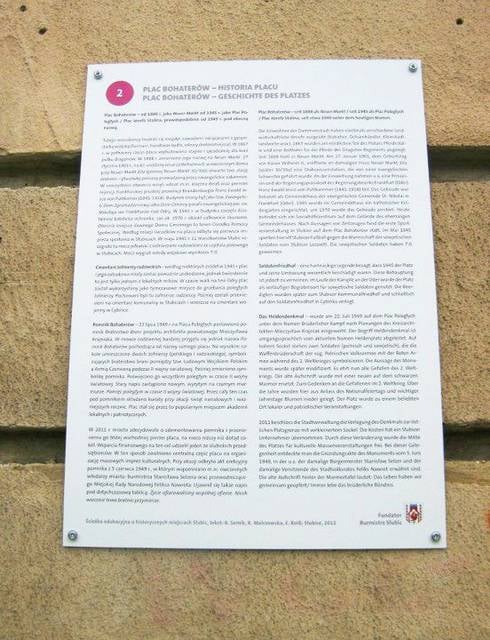
Memorial
Kasia of Heilbronn Monument

Monument to Kasia of Heilbronn in Słubice - monument on Freedom Square in Słubice, unveiled on June 6, 2008, on the 10th anniversary of the signing of the partnership agreement between Słubice and Heilbronn.
The ceremony was attended by representatives of Slubice District, representatives of Slubice Municipality and a delegation from Heilbronn.
"Kasia z Heilbronnu" (German: Kätchen von Heilbronn) is a literary character from German Romantic writer Heinrich von Kleist's drama Kasia z Heilbronnu, or trial by fire, and one of the symbols of Heilbronn, a partner city of Slubice.
Kasia from Heilbronn is dressed in an airy strapless dress, holding a hat with a bow in her left hand and brushing back her hair with her right hand.
The monument was designed by an artist Miroslaw Gorski and made on commission for the municipality of Slubice by the company Malpol from Nowa Sol.